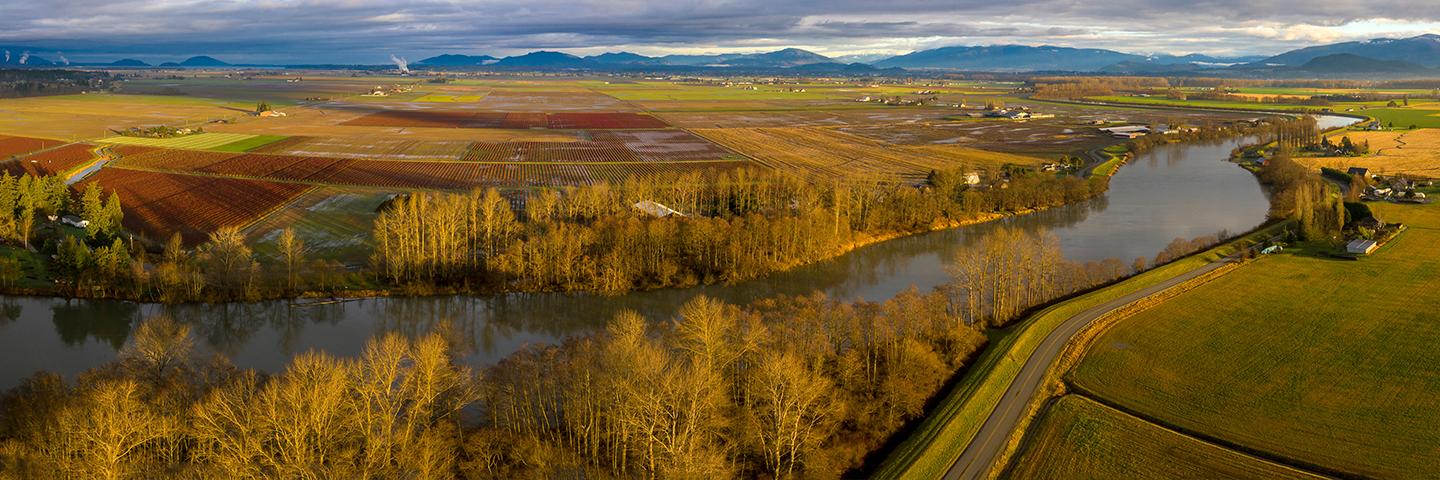
Watersheds impact everyone; every community, farm, ranch, and forest. They provide a vital resource for all living things to survive and thrive. All watersheds are interconnected, creating a land-water system that conveys water to its final destination such as a river, lake, wetland, or estuary.
On This Page
Watersheds impact every community; every town, city, and farm. All watersheds are interconnected, creating a land-water system that conveys water to its final destination—a larger stream, an inland lake, a wetland, an estuary, or ocean.
NRCS Watershed Programs provides technical and financial assistance to local government agencies, tribal organizations and other eligible sponsors, to help communities implement conservation practices that address watershed resource concerns. Each program, has a specific area-of-focus as defined below.
Since its enactment in 1948, NRCS Watershed Programs has designed and built 11,850 dams, constructed water storage structures, designed flood management systems, stabilized stream banks, relocated properties, redirected stream flows (when necessary), re-established wildlife habitat, and more, to save lives and protect our watersheds.
Bipartisan Infrastructure Law (BIL) and Watershed Programs
The Bipartisan Infrastructure Law, also known as the Infrastructure Investment and Jobs Act (IIJA), signed in November 2021 by President Biden, provided $918 million for NRCS watershed programs. View the funded projects. For more information on the Bipartisan Infrastructure Law, please visit the USDA website.
Colorado Watershed Programs and Rehabilitation
Ready to get started?
Contact your local service center to start your application.
How to Get Assistance
Do you farm or ranch and want to make improvements to the land that you own or lease?
Natural Resources Conservation Service offers technical and financial assistance to help farmers, ranchers and forest landowners.

To get started with NRCS, we recommend you stop by your local NRCS field office. We’ll discuss your vision for your land.
NRCS provides landowners with free technical assistance, or advice, for their land. Common technical assistance includes: resource assessment, practice design and resource monitoring. Your conservation planner will help you determine if financial assistance is right for you.
We’ll walk you through the application process. To get started on applying for financial assistance, we’ll work with you:
- To fill out an AD 1026, which ensures a conservation plan is in place before lands with highly erodible soils are farmed. It also ensures that identified wetland areas are protected.
- To meet other eligibility certifications.
Once complete, we’ll work with you on the application, or CPA 1200.
Applications for most programs are accepted on a continuous basis, but they’re considered for funding in different ranking periods. Be sure to ask your local NRCS district conservationist about the deadline for the ranking period to ensure you turn in your application in time.
As part of the application process, we’ll check to see if you are eligible. To do this, you’ll need to bring:
- An official tax ID (Social Security number or an employer ID)
- A property deed or lease agreement to show you have control of the property; and
- A farm number.
If you don’t have a farm number, you can get one from USDA’s Farm Service Agency. Typically, the local FSA office is located in the same building as the local NRCS office. You only need a farm number if you’re interested in financial assistance.
NRCS will take a look at the applications and rank them according to local resource concerns, the amount of conservation benefits the work will provide and the needs of applicants. View Application Ranking Dates by State.
If you’re selected, you can choose whether to sign the contract for the work to be done.
Once you sign the contract, you’ll be provided standards and specifications for completing the practice or practices, and then you will have a specified amount of time to implement. Once the work is implemented and inspected, you’ll be paid the rate of compensation for the work if it meets NRCS standards and specifications.

